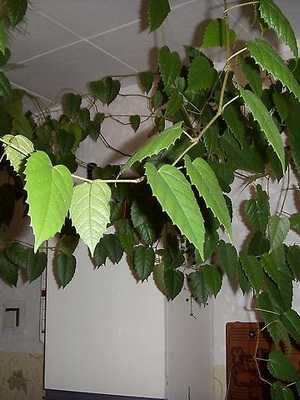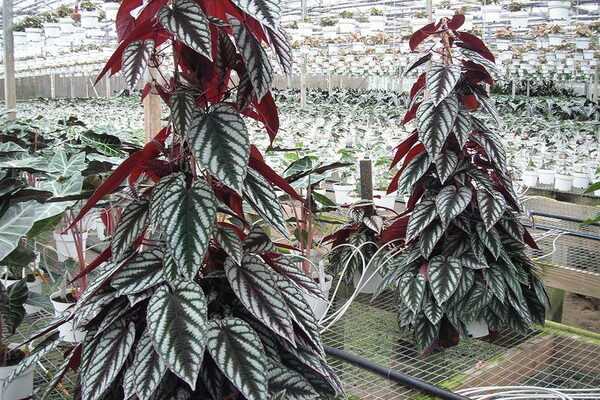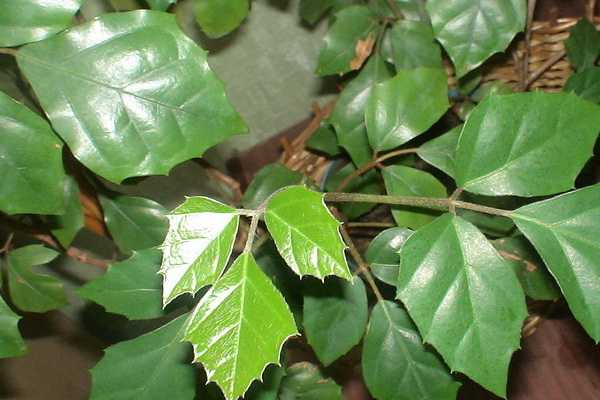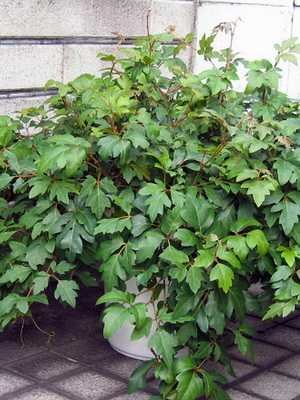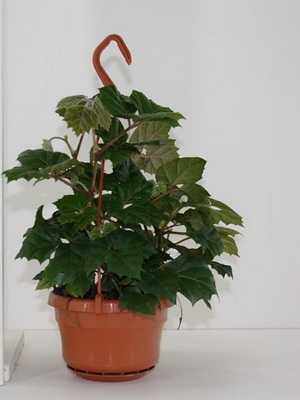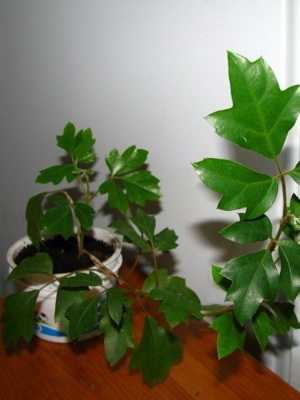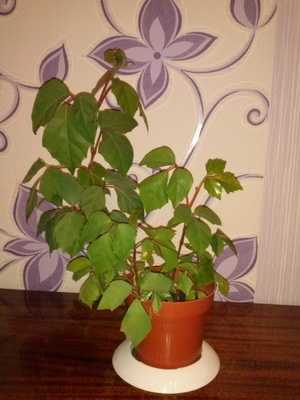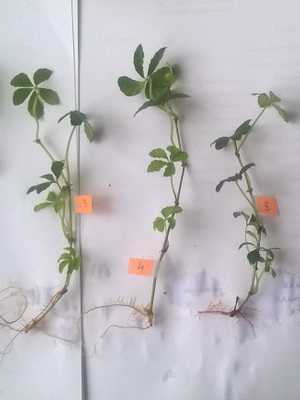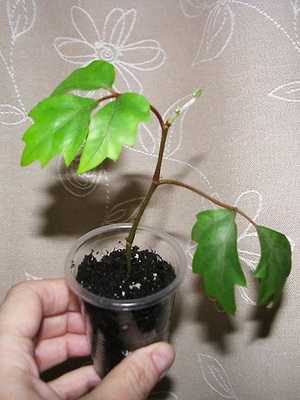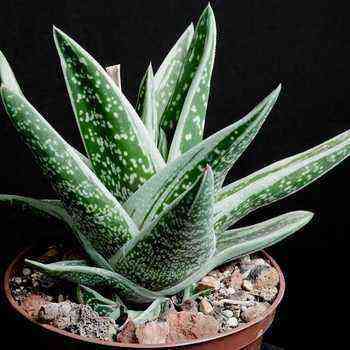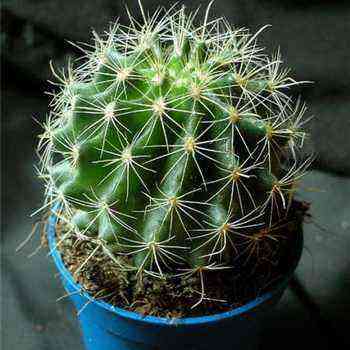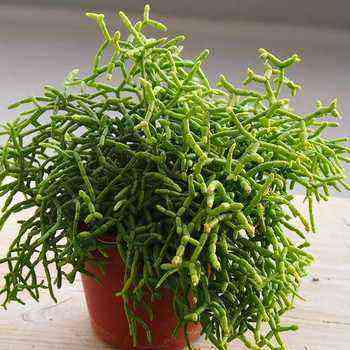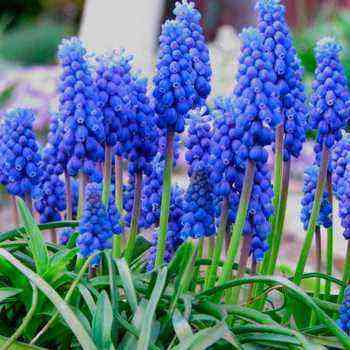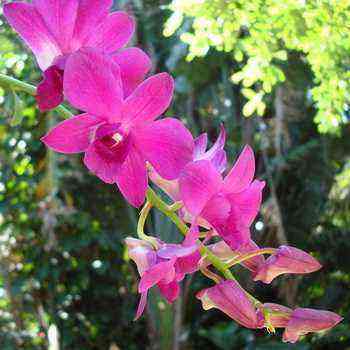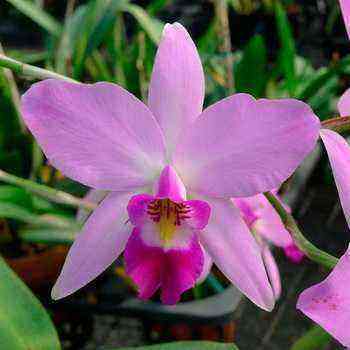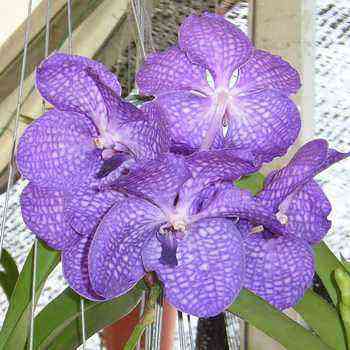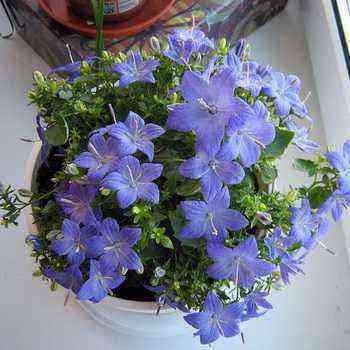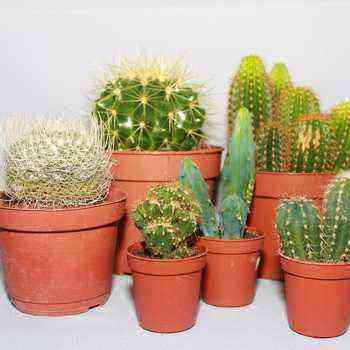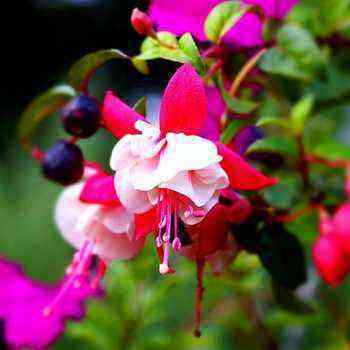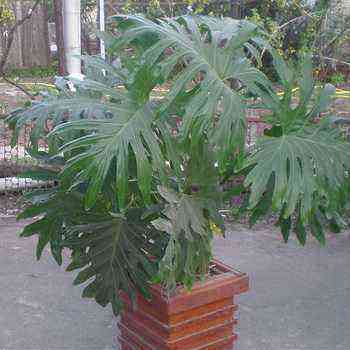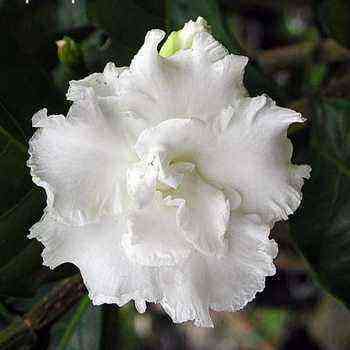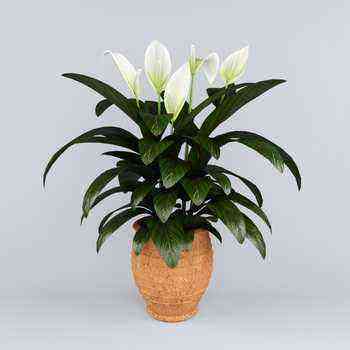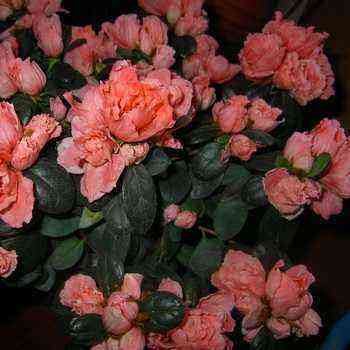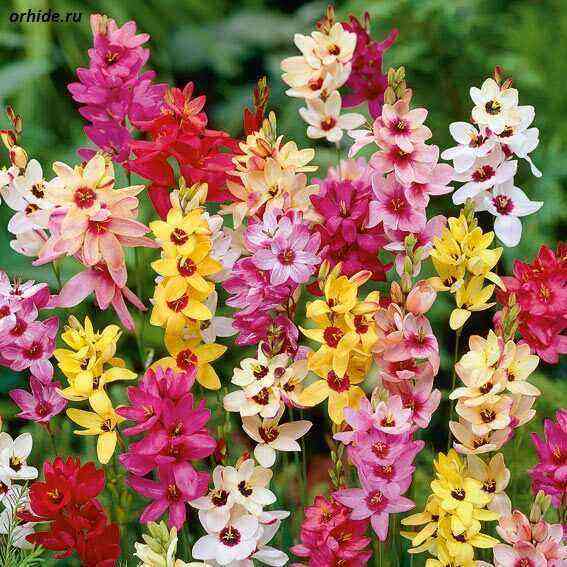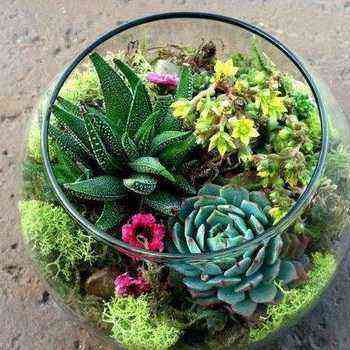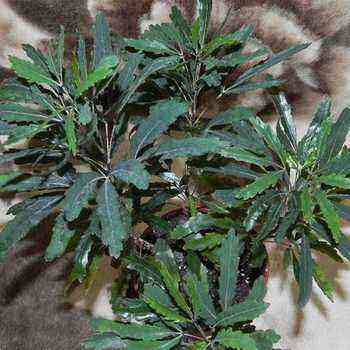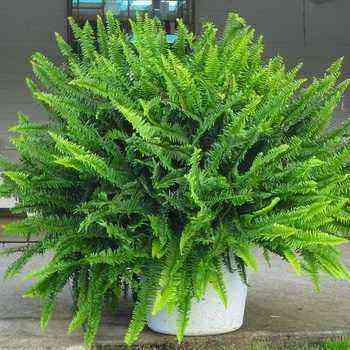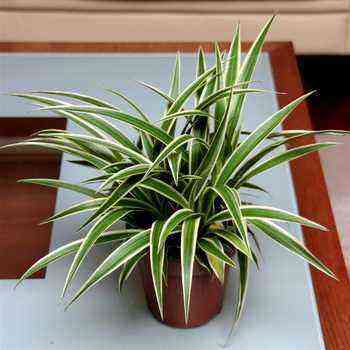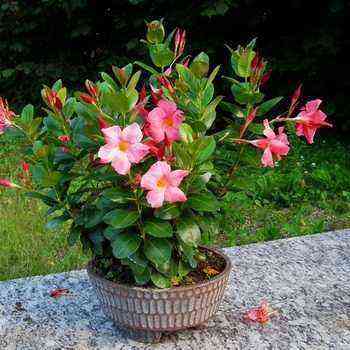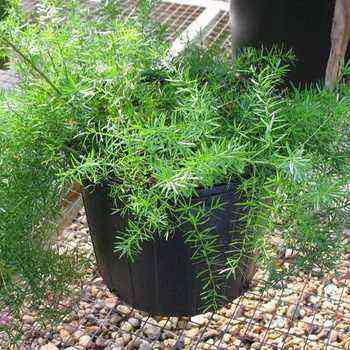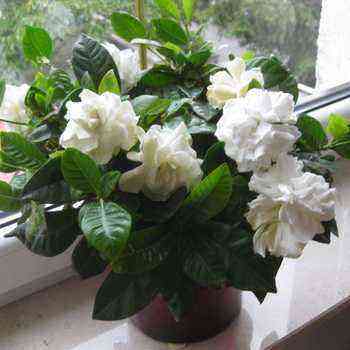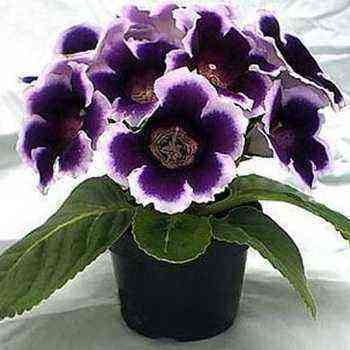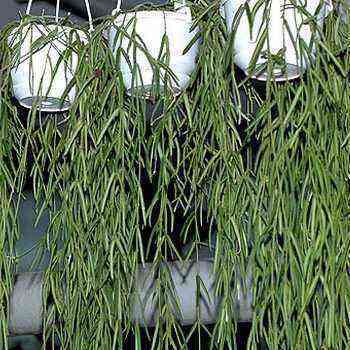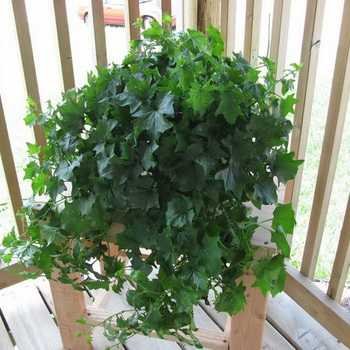
Cissus (Cissus) belongs to the grape family. Homeland – tropics and subtropics of South Africa, Asia, Australia.
A large tropical genus, numbering about 350 species, some of them are succulents, the rest are woody forms of lianas. Some representatives are valued as fruit and ornamental plants. The ones most often cultivated in rooms are climbing plants with beautiful foliage. Flowers that appear in summer are usually green and inconspicuous.
Indoor flower cissus is a valuable plant for vertical gardening of interiors. These vines mask columns, pergolas, trellises; planted in hanging pots and baskets, they decorate window openings and arches like ampelous plants. Thanks to its decorative shiny, often multi-colored leaves, the plant is ideal for creating colorful accents in group compositions of a winter garden or its fragments.
Description of cissus
Decorative-leaved indoor herbaceous vine with climbing shoots. The leaves are alternate, dark green above, often with spots or streaks, the underside is lighter. The petioles and stems are pubescent. At the same node with the leaves, antennae are located, with which the plant clings to the support. The flowers are small, greenish, collected in a scutellum inflorescence. Very unpretentious, hardy plant.
Cissus is not a real grape, but, of course, it has nothing to do with ivy either, since ivy “walks” along the wall on adventitious roots or, figuratively speaking, on “legs”, and this plant is on “hands” or, rather , on a mustache.
As you can see in the photo, indoor cissus with simple oval leaves jagged along the edges forms a mustache:
Antennae sometimes develop into a branch with leaves, sometimes into an inflorescence, and for the most part they hide from the light and, as it were, look for support in the wall, crawling into dark cracks. The antennae, touching a solid object, forms a thickening with a pinhead at the end, which then expands in breadth and takes the form of a seal. The sticky sap holds the tendril seal to the support. The attached tendril continues to grow and, at the same time, twist like a spring. Even a strong wind cannot tear off the cissus from its support, it only slightly removes the branches. And the gust of wind will subside, again the branches, as on springs, are pressed against the wall or tree. Antennae on old stems dry up, but new ones appear on growing young ones. And the cissus plant slowly creeps upward, as if walking “on hands”.
On the long stems of cissus, water is supplied by the roots with such force that in Java, the locals cut them and drink the flowing juice. Quite quickly, according to travelers, the glass is filled with a cool drink. When describing cissus, it is sometimes referred to there as a “plant source”.
Don’t try to trim the stems of your cissus. Weak roots in a small pot are unlikely to pick up much water up the stem. Do not destroy the plant because of a few drops of watery and, moreover, not at all sweet juice.
Types of cissus: photo, name and description
In indoor floriculture, the following varieties are popular:

cissus amazon (C. amazonica)
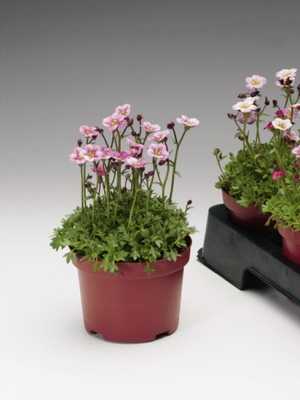
cissus antarctic (C. antarctica)
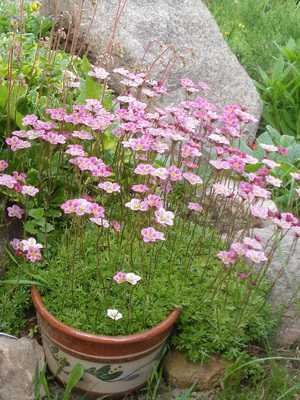
cissus baynes (C. bainesii)
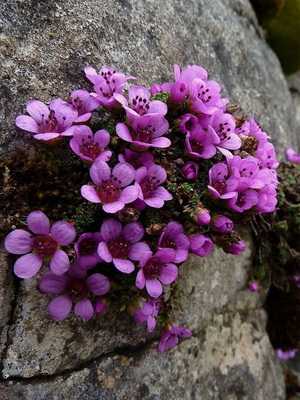
cissus bicolor (S. discolor)
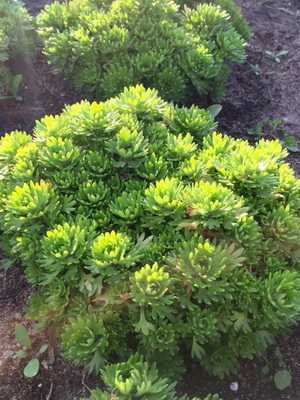
cissus cape (C. capensis)

cissus square (C. quadrangularis)
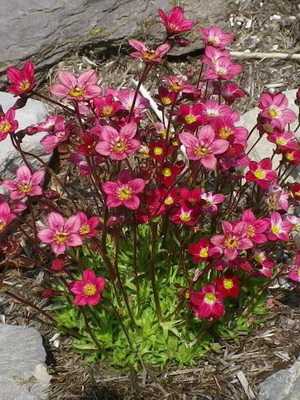
tuberous cissus (C. tubeberosus)
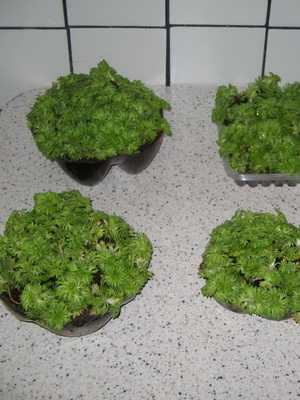
cissus striped (C. striata)
Cissus Antarctic.
Liana with thin shoots and large green leaves, wavy at the edges, located alternately. The flowers are small and have no decorative value. This species does not have clinging antennae, so it needs support – a trellis is best. The fruits are berries. This cissus at home easily reaches 3 m in length and requires a lot of space.
Cissus multicolored.
A graceful liana with red tendrils and stems and heart-shaped sharp leaves, the color of which combines violet-red, silver-gray and olive-green tones. Below the leaves are colored purple-red.
Cissus rhomboid.
Evergreen vine with thin branched stems and dark green leaves covered with reddish hairs underneath. Leaves with three leaves, of which the middle one is larger than two lateral ones. The flowers of this type of cissus are very small, collected in racemose inflorescences. Does not bloom at home.
There are other species suitable for indoor floriculture, such as tetrahedral cissus (succulent plant with long tetrahedral stems and antennae), rhombic cissus and striped cissus, differing in the shape and color of the leaves.
Look at the photos of the cissus species, the names of which are given above:
How to care for a cissus plant
Lighting. Cissus grows equally well in light and shaded rooms. Avoid exposure to direct sunlight.
Accommodation. In order to take care of the cissus as carefully as possible, in summer it is recommended to take the plant out into fresh air and protect it from direct sunlight, otherwise the leaves will begin to darken and dry out. For the autumn-winter period, cissus should be placed near a window facing the west or east side.
Temperature. The plant is not afraid of low temperatures, but it feels most comfortable at a temperature of 15-21 ° C. Preferably 9-15 ° C in winter.
Humidity. Easily tolerates dry room air. In the summer, in the heat, spraying with water at room temperature is useful. You can put a tray filled with damp pebbles next to the cissus.
Substrate. The substrate is prepared from humus, leaf and clay-sod soil, sand (1: 1: 1: 0,5).
Transfer. In the spring, if necessary. Too long shoots are shortened. When planting in a new container, you need to check for a hole for water drain and make good drainage.
Watering. During the period of active growth, when caring at home, cissus requires abundant watering, but it must be remembered that excess moisture can cause sagging leaves and even the death of the plant. In winter, watering should be reduced.
Food. From spring to autumn, plants are fed once a decade. Cissus is fed with liquid flower fertilizers.
Breeding. Cuttings that root well in wet sand and even water.
For propagation, you can use stem cuttings cut at an angle from biennial shoots. Each stalk should have two to three buds. Plant material should be planted for rooting in sand, heated to 25-27 ° C, and covered with a glass jar.
Pests and diseases. With high humidity and excessive watering, cissus sheds its leaves. The main pests of the plant are aphids, scale insects and whiteflies.
